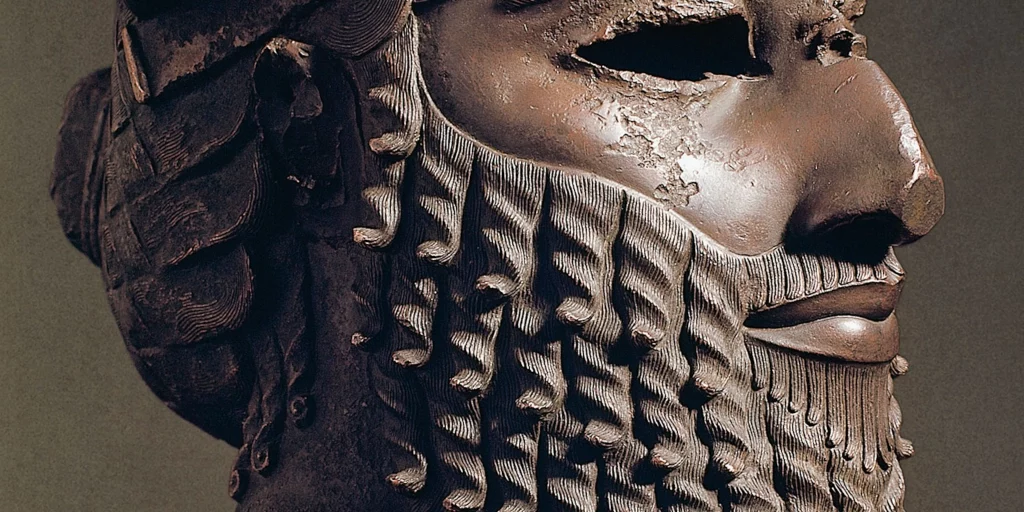Last updated on April 29th, 2024 at 08:43 pm
Albert Fish is remembered as one of America’s most notorious and depraved criminals. His life story is a chilling narrative of sadism, insanity, and heinous acts that shocked the nation during the early 20th century.
Fish’s legacy is a haunting reminder of the depths of human cruelty, and a warning that serial killers can be made through terrible circumstances.

Early Life and Troubled Childhood
Fish’s childhood was almost a perfect textbook example of the development of a serial killer. It was marked by tragedy and instability.
He was born Hamilton Howard Fish on May 19, 1870, in Washington, D.C. to Randall Fish and Ellen Francis Howell. He was the youngest of five children born to the couple, although he only had three living siblings: Walter, Edwin, and Annie.
The fourth child had been named Albert, the moniker that Hamilton adopted early in life as a necronym (a reference to someone who is deceased). This was perhaps a way of avoiding his own life, or to escape the relentless mocking he received from other children around him.
His father was abusive until he passed away when Fish was just five years old, and without Randall’s support, Fish’s mother struggled to provide for the family.
She was forced to send the children to St. John’s Orphanage in Washington, D.C. for about five years. Fish’s time at the orphanage saw him further abused both physically and verbally. This abuse began to twist his psyche as he came to love the pain and develop deviant desires.
His mother was finally able to remove him from the orphanage. But the few years that he spent there harshly dictated his development and set the course of his life.
Upon exiting the orphanage, he quickly fell into a number of relationships with other young boys. These resulted in experimenting with new sexual fetishes.
Adolescent Escalation
In adolescence, Fish began to demonstrate some of the sadistic and disturbing behaviors that would make him infamous later in life. He began showing interest in drinking urine and eating feces. He experimented with self-harm, and developed an interest in pedophilia.
At various points, he was introduced to sexual mutilation, including a scientific bisection of a penis that enthralled him. He soon began experimenting with his own sexual masochism.
Much later, he found that he had 29 needles in his pelvic region, all of which had been self-inserted. By his early 20s, Fish developed a pattern of criminal behavior that included male prostitution and pedophilic molestation.
At the same time, he entered an arranged marriage set up by his mother with a woman named Anna Mary Hoffman, with whom he had six children. The marriage lasted a decade before his wife left him to raise the children alone.
Although it is believed he never hurt his children, he did at times ask them to participate in his masochistic behaviors.
A Long History of Criminal Behavior
In 1903 Fish was arrested for the first time for committing grand larceny. It would be nearly thirty years before he was arrested for his other crimes.
In that time period, Fish subjected dozens of children to sado-sexual torture. He lured them in with money or promises of treats before brutally harming or killing them.
He not only targeted young boys, but commonly sought out those with intellectual disabilities to torture and kill. His first victim was Thomas Bedden, who he had a sadomasochistic relationship with before he tortured Bedden and cut off half his penis.
By the end of his life, Fish was known to have killed three children, but was suspected in over a dozen other cases. Fish also claimed to have assaulted over 100 young boys.
He also claimed that he had killed someone in each of the 23 states he lived in over the course of his life, but no proof has ever been found to support these claims.
His Final Victim
His final victim was named Grace Budd. She was a 10-year-old girl whom he kidnapped after plotting to kidnap and murder her brother.
Under the name Frank Howard, Fish approached the Budd family in response to a classified ad posted by Edward Budd. He planned to capture the young man before torturing and mutilating him.
After meeting the family, though, he realized Edward was older than his usual target demographic, so he decided to capture his little sister Grace instead. Taking her to the same location he had planned for Edward, he brutally tortured her before killing her and eating her body.
After finishing his atrocious act, he sent a letter to Budd’s mother detailing what he had done. Although he included no personal detail on the note, police were able to track down Fish from small details on the letterhead.
They found the room where he had previously been staying. They learned that while Fish had checked out a few days before, he had asked them to hold his next check until he could return for it.
Police waited until Fish came for the check and arrested him for the murder.
Finally Tried for his Crimes
During the trial, his lawyer moved forward with an insanity plea on Fish’s behalf. He cited his earlier crimes, a personal and family history of mental illness, and the extreme and graphic nature of his crimes.
Multiple psychiatric evaluations were conducted. The consensus was that Fish suffered from various mental disorders, including psychosis and schizophrenia. Despite the defense’s efforts, Fish was found guilty of the kidnapping and murder of Grace Budd.

The jury all agreed that Fish was undoubtedly insane, but they decided he still deserved the death penalty. They ruled unanimously for his execution. He was sentenced to death, and his execution was carried out on January 16, 1936, at Sing Sing Correctional Facility in Ossining, New York.
Fish’s final words were reportedly a confession to the gruesome acts he committed before the executioner pulled the switch to the electric chair.
Psychoanalysis of Fish’s Motivations
Psychologists have spent nearly a century since Fish’s execution studying his life to understand how someone could become such a twisted human.
They have determined that Fish’s early childhood, suffering at the cruel hands of his father and other children, is a strong factor in developing his sadistic and sociopathic cruelty. The more pain was inflicted on the child, the more he grew to enjoy it and desire to also inflict pain on others.
The pain eventually became a source of sexual release for Fish. Part of his criminal defense was that he unintentionally ejaculated twice while killing Grace Budd despite the fact that he did not sexually assault her. He simply was sexually stimulated by the act of torture.
A family history of mental illness also predisposed Fish to the psychological issues that would plague him throughout his life. His uncle had mania. His brother was admitted to a state mental hospital. His sister was diagnosed with mental illness. A paternal half-brother suffered from schizophrenia, and his mother had hallucinations.
Three other family members also had diagnoses. However, it is unknown how many others may have suffered from psychological issues in an era where mental illness resulted in institutionalization and harsh medical treatment.
Fish’s mental state was genetically unstable. It is no surprise that the trauma he experienced at a young age deteriorated his mental well-being.
Finally, the strict Calvinist upbringing that Fish’s father enforced twisted Fish’s sense of morality. It informed his psychopathic behavior. He constantly believed he was being directed by religious figures and that his actions would cleanse him of his own sins.
His father, a sober alcoholic, used religion to enforce and support the violence he inflicted on his children. This instilled in Fish a fear of the wrath of God that dictated the rest of his life.
Obsessed with the story of Abraham, Fish killed young boys to ask for the grace of God. He believed that angels would intervene if it was wrong. His cannibalistic behavior has also been assumed to be a form of communion for Fish.
References
“Albert Fish.” Crime Museum, 2022. https://www.crimemuseum.org/crime-library/serial-killers/albert-fish/.
Maqbool, Adil. “The Man Who Ate a Little Girl — Albert Fish.” Medium, January 4, 2023. https://medium.com/@adilmaqbool92/the-man-who-ate-a-little-girl-albert-fish-e462cfe2ecfe.
Phan, Daniel. “Everything You Need To Know About Albert Fish.” January 1, 2022. https://serialkillershop.com/blogs/true-crime/albert-fish.

